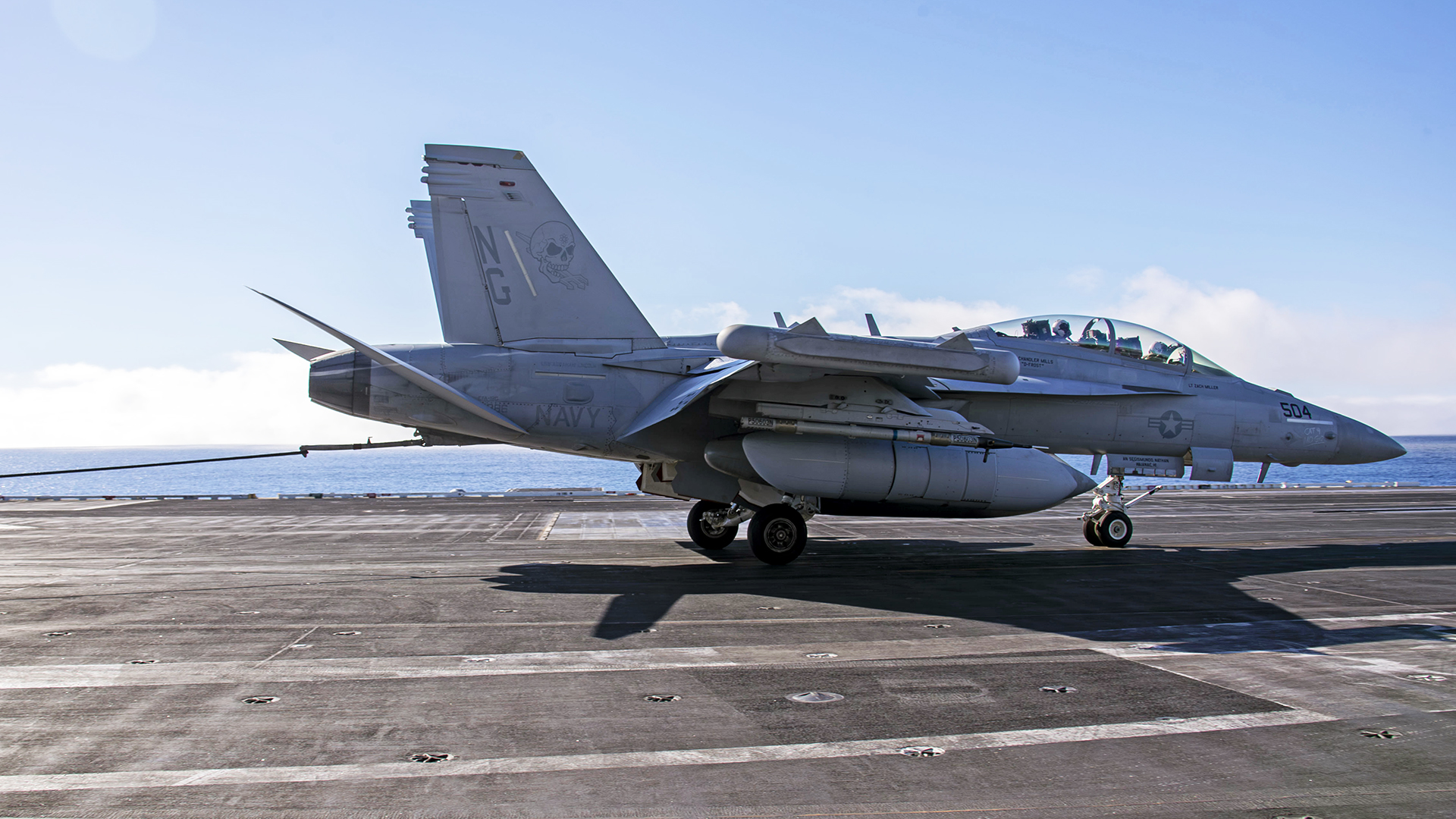The Navy’s new AN/ALQ-249(V)1 Next Generation Jammer-Mid Band (NGJ-MB) electronic warfare pods have completed their maiden deployment with an E/A-18G Growler squadron. The pods went on cruise with Electronic Attack Squadron 133 (VAQ-133) to the highly tumultuous Red Sea and Gulf of Aden with the USS Abraham Lincoln Carrier Strike Group (CSG) last year, and the carrier returned home in time for the holidays.
TWZ spoke this month with two of the top officers involved in the NGJ-MB effort to get a sense of how the pods performed, what’s next for the system and the decision-making process behind fielding the ALQ-249 last year, even as formal Pentagon testing and evaluation remained incomplete.
Details about the ALQ-249 pod’s capabilities remain limited. Cmdr. Erik Dente, VAQ-133’s commanding officer, declined to comment on precisely how the NGJ-MB pods performed on deployment, or the target sets they took on against the Iran-backed Houthis in Yemen.
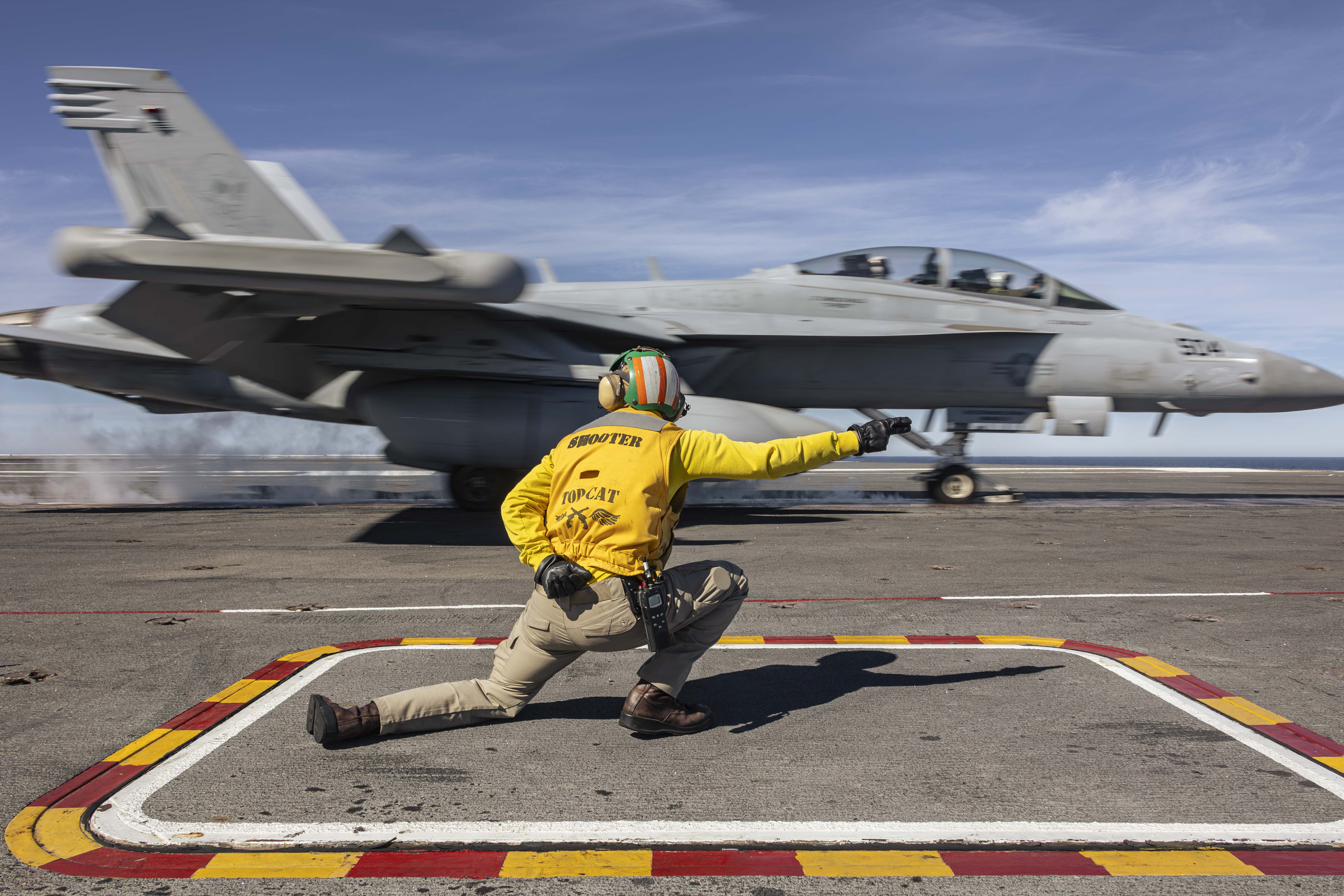
Capt. David Rueter, program manager for airborne electronic attack systems at Naval Air Systems Command (NAVAIR), also declined to talk specifics, but he noted how the ALQ-249 represents “a quantum leap in where we are with airborne electronic attack.”
“They performed as expected, or maybe even a little better than I expected,” Rueter said of the ALQ-249 pods. “When you’re developing a program, you have an idea how you think it’s going to be employed, between hangar bay, flight deck, cyclic ops, that kind of stuff. And then what actually happens is probably not the exact scenario you plan for.”
Rueter added that his team will be traveling to the squadron this week to get more feedback on how the NGJ performed. Dente called the transition to the new pods “pretty seamless.”
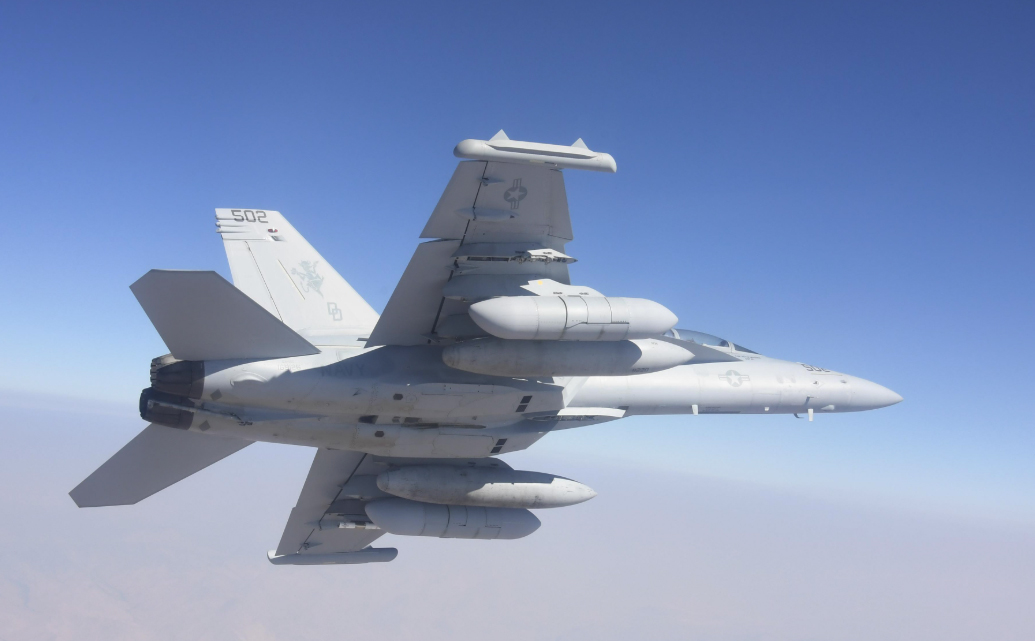
“I won’t get into specifics about pod performance,” he said. “I will say it’s always a challenging thing about a brand new system … Those challenges, to me, largely spoke to what that system is capable of.”
While the Navy has remained mum about what precisely the ALQ-240 can do, manufacturer Raytheon describes the NGJ-MB as “an advanced electronic attack system that denies, disrupts and degrades enemy technology, including communication tools and air-defense systems.” Its capabilities include “operating at significantly enhanced ranges” and “attacking multiple targets simultaneously.”
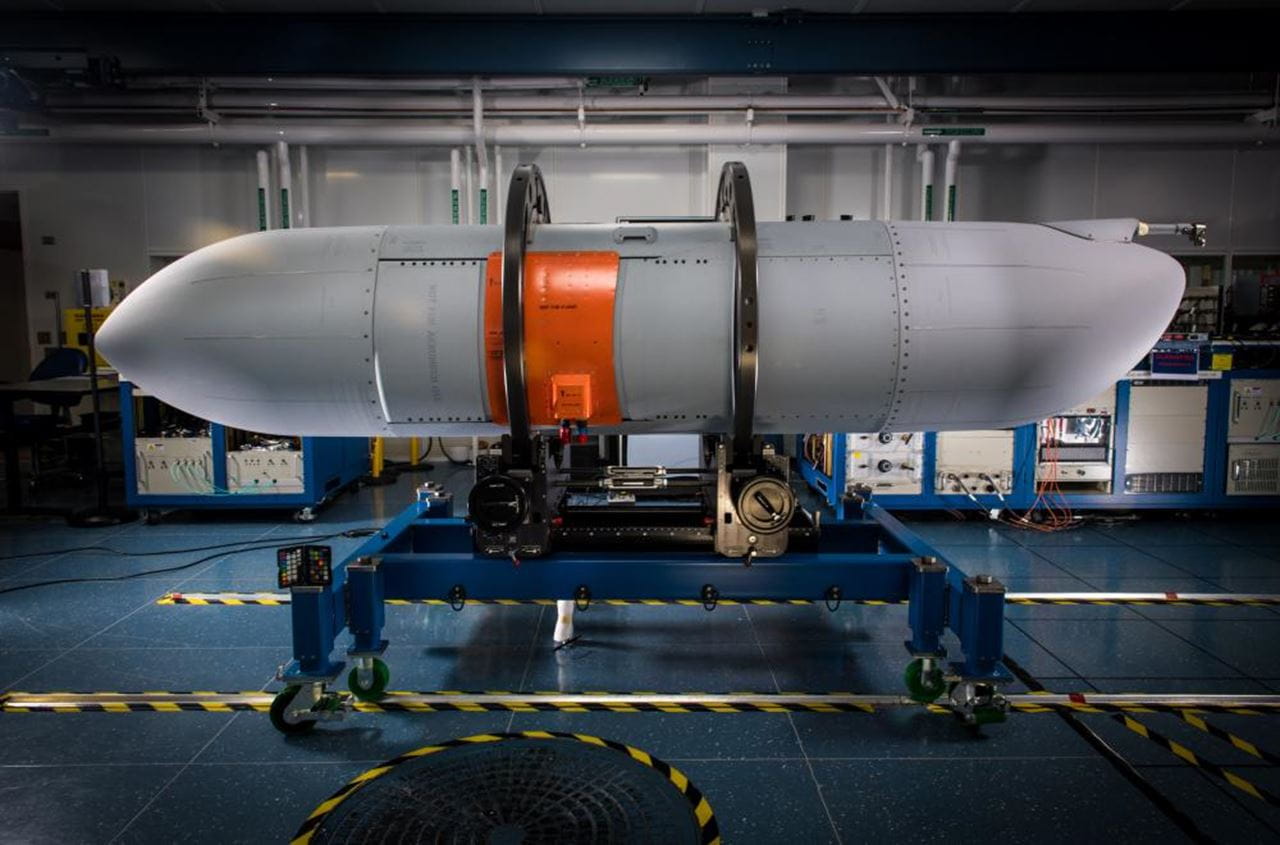
They are replacing the legacy AN/ALQ-99 pods, which first entered service in the early 1970s and have received upgrades since then, even as officials concede that upgrade capacity on the ‘-99s’ is running out.
“We realized years ago that we’ve kind of maxed out the ALQ-99 form factor,” Rueter said. “So next gen jammer really brings us up into modern and evolving threats. So much more modern architecture, more capacity than ALQ-99, more power and certainly more capability.”

ALQ-249 pods are designed to improve EA-18G capabilities against modern, advanced radiofrequency (RF) threats — namely air defenses — as well as communications, datalinks, and non-traditional RF targets. The pods also offer the Navy a new way “to deny, degrade, or deceive the enemy’s use of the electromagnetic spectrum by employing both reactive and preemptive jamming techniques while enhancing the friendly force’s use of the electromagnetic spectrum,” a Pentagon report assessing the capability states. You can read our assessment of how the new pods could provide additional capabilities here.

The NGJ-MB’s use of multiple active electronically scanned arrays (AESA), something not found on the older ALQ-99s jammers, as well as its modular open architecture design, could open the door to a variety of new and improved capabilities.
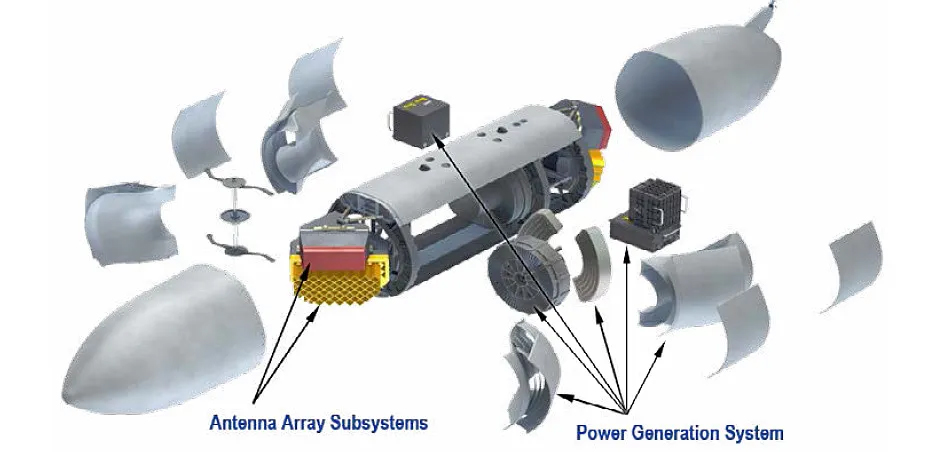
During past U.S. operations in Afghanistan and Iraq, it emerged that Growlers, as well as the EA-6B Prowlers they replaced, had been using their electronic warfare suites to prevent militants from remotely detonating improvised explosive devices. The bottom line is that these new pods have capabilities we do not know anything about and the tactics behind their use are rapidly evolving.

As its name indicates, the NGJ-MB pods are only designed to work in certain frequency bands. L3 Harris has been developing an entirely separate NGJ-Low Band (NGJ-LB) pod to complement the mid-band ones.
There are also high and low-band versions of the ALQ-99, and Rueter told TWZ that the service’s priorities for next-generation jammers are midband first, then low band and eventually high band.
“I’ll say high band is still on the to do list, but it’s prioritized appropriately, and we’ll get to it eventually,” he said.
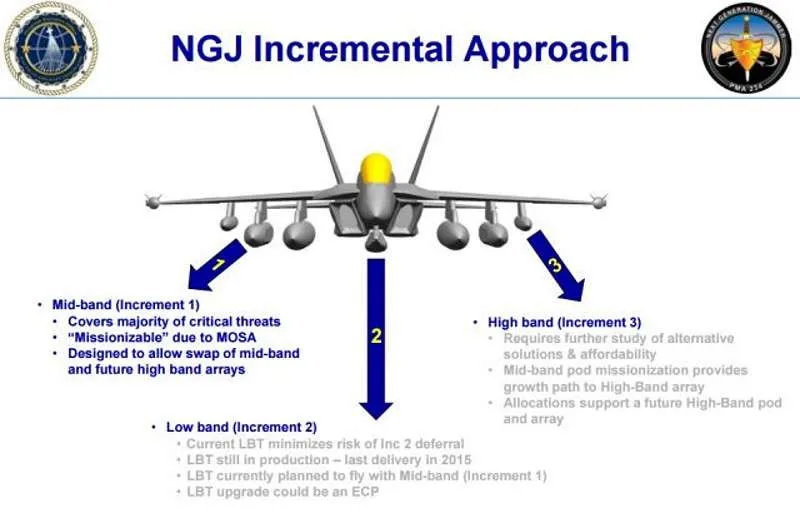
While VAQ-133 was the first unit to deploy with the pods, Rueter said an initial ship set was sent to them at the onset of their pre-deployment workups, to get the air crew familiar with the new system.
“We really tried hard to get their air crew and their maintainers trained, and give them at least one ship set from the very beginning,” he said. “So they were actually flying with NGJ mid band for a little under a year before they actually deployed.”
Nothing much changed on the pre-deployment workups side with the arrival of the NGJ-MB, Dente said, it was just new technology to incorporate.
The new jammer pods are loaded and offloaded onto the Growler depending on mission requirements, and Dente said his squadron noted very little change when it came to handling and operating the AN/ALQ-249, although incorporating the new tech into the unit and getting everyone trained up on the system before deployment took some time.
“How we operated is largely similar,” he said. “There’s just some differences in basic admin of the pod, turning it on and off, those things are a little bit different, but generally speaking, employment and operation is similar.”
Because the new jammer pods were still going through operational testing, Air Test and Evaluation Squadron 9 (VX-9) designated VAQ-133 as “adjunct testers” as they began fielding the AN/ALQ-249, Rueter said.
“So 133 was able to do that, and VX-9 was able to leverage any data from 133 to help augment operational tests,” he said.
Sending the NGJ-MB out into the fleet provided invaluable feedback to the Navy regarding how the new pods hold up to the stressors of a combat deployment, Rueter added.
“It’s just the pure number of flight hours,” he said. “We put a lot of hours on in test, but we cannot do what the fleet does. The fleet probably puts more hours on in a month than we do in a year in developmental and operational test.”
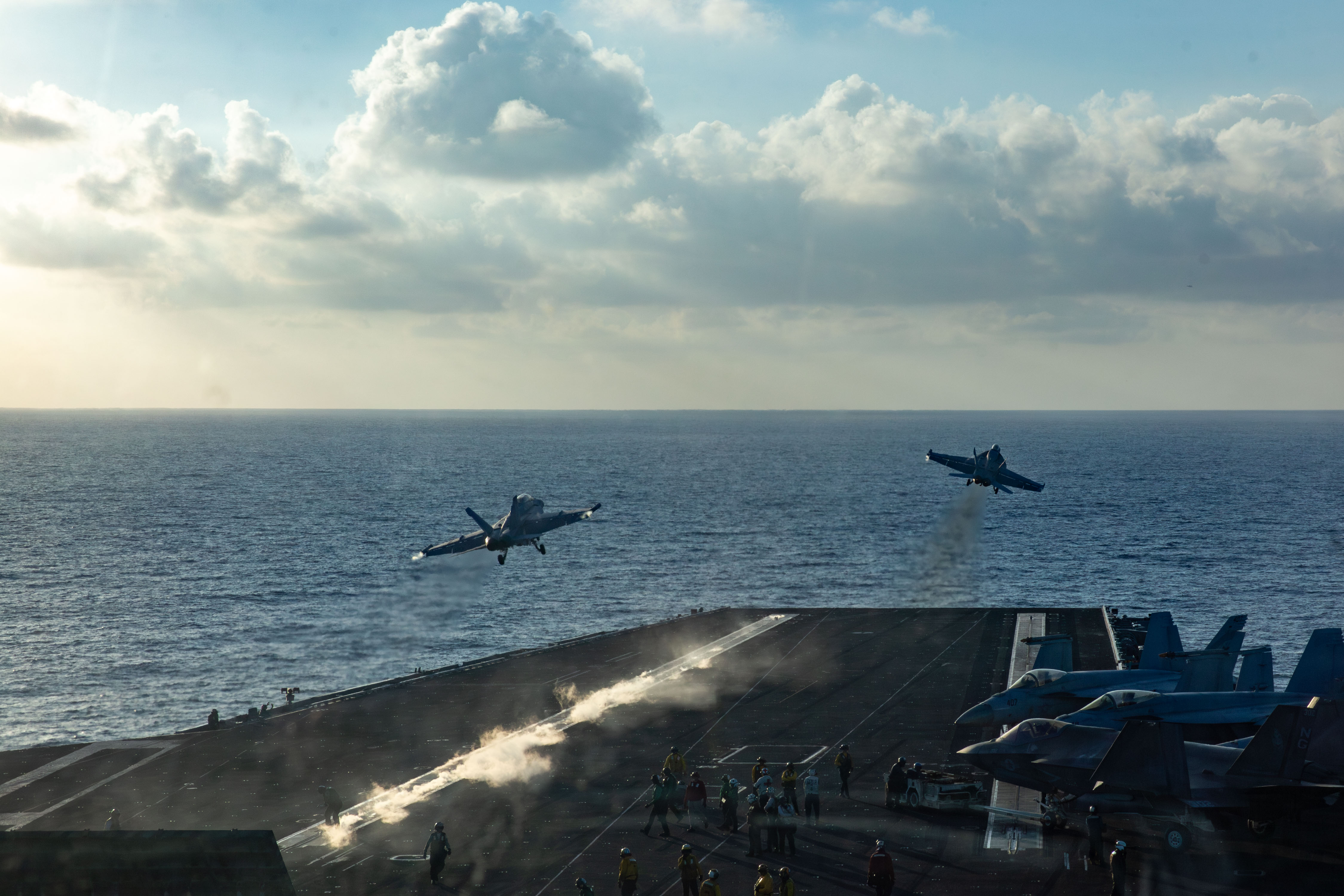
Deploying the NGJ-MB aboard a flattop in a combat environment for the first time presented its own unique challenges, according to Dente.
“Saltwater environment, being out to sea, how do these things live on an aircraft carrier with us?” he said. “It takes adaptation … because not only do we have to worry about the safety challenges that are always presented by new equipment being stored on an aircraft carrier, but we also have to learn how to keep the system itself safe from bumps, bruises, scuffs and normal day-to-day hazards that operations on an aircraft carrier present.”
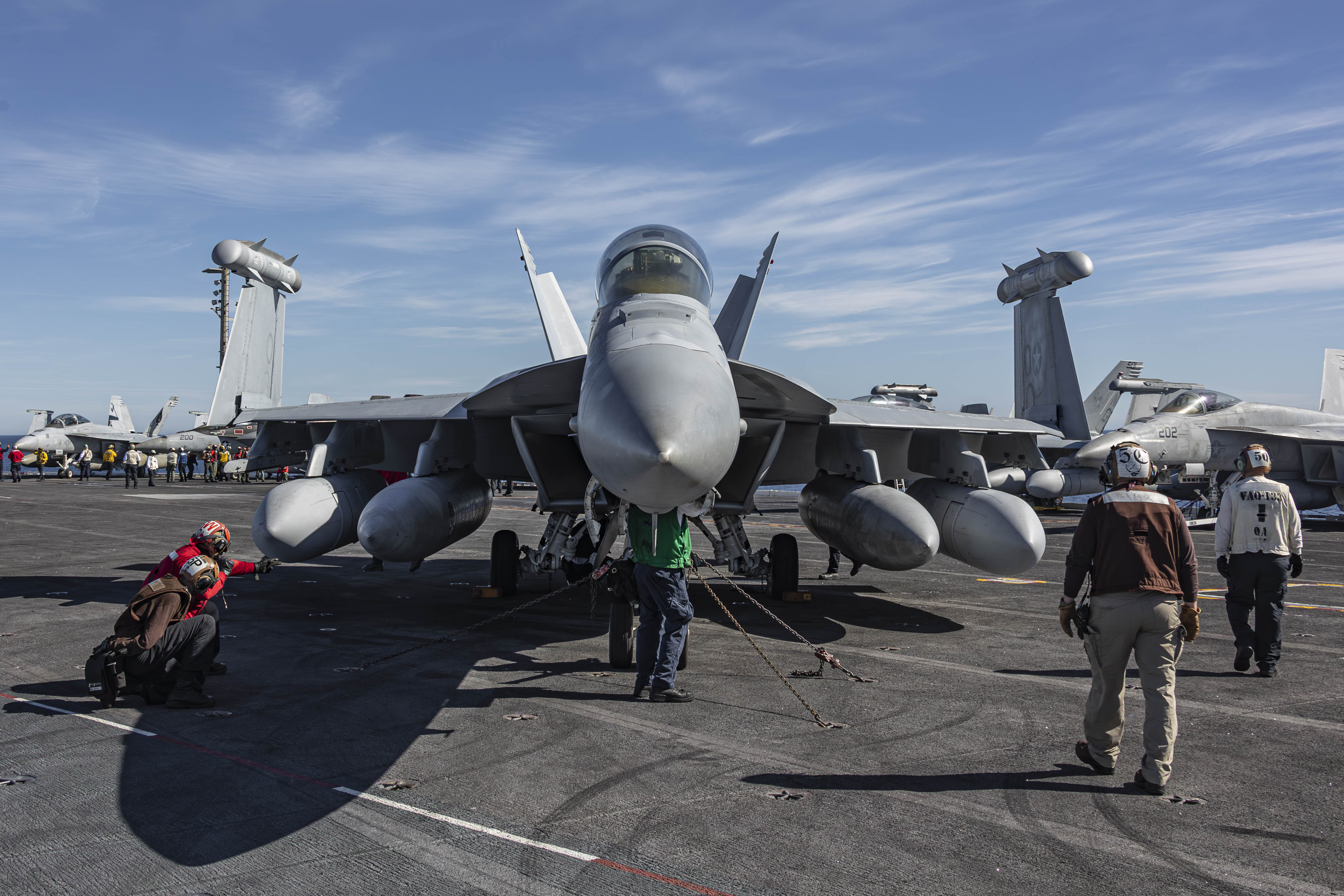
While ALQ-249 now has its first deployment under its belt, the latest Director, Operational Test & Evaluation (DOT&E) Pentagon report released this month highlighted challenges the service has faced with ALQ-249 development in the past year.
“Technical challenges were significant during the course of all testing in FY24,” the report states. “Specifically, reliability has been a clear challenge during the course of the program development, to the point of affecting suitability and the ability to assess the performance of the system overall. Early reliability issues were predominantly hardware related, but after further development and implementation of fixes, the remaining issues appear to be mostly software centric. Although data are still insufficient to fully assess the reliability of the system, data trends have been markedly improving, suggesting the potential for a strong positive reversal in the future.”
Rueter called the DOT&E assessment “fair,” and said that previous development programs have followed such a progression.
“The hardware failures, or the hardware things, kind of mask the software,” he said. “So the first thing you do is get the hardware reliable, then you start working on the software. And like [DOT&E] said, we have seen great improvements in our reliability over the last year.”
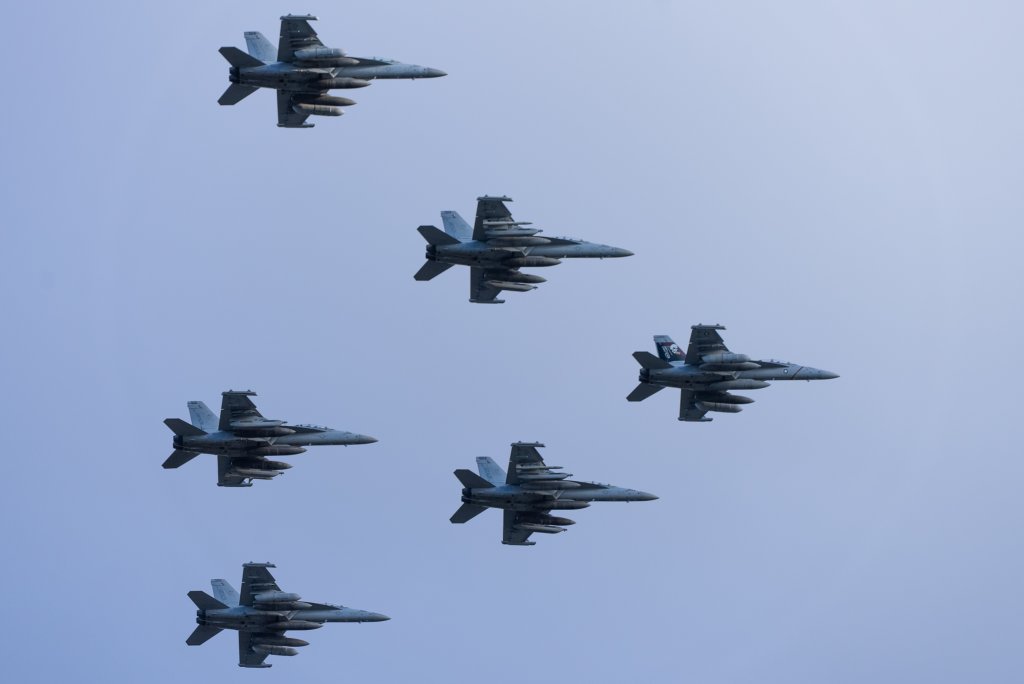
The decision-making calculus remains unclear regarding the Navy choosing to deploy the new jammer pods despite this initial testing and evaluation not being completed. Naval Air Force officials did not answer TWZ questions about the decision to send the capability into the hectic skies over the Red Sea, where the Navy has battled Iran-backed Houthi rebel missile and drone barrages for more than a year.
Rueter deferred questions about sending the pods out with VAQ-133 to the fleet, but noted how the squadron got their first pod set during pre-deployment workups and chose which pods to affix to the jet depending on the mission. Growlers can carry both at the same time.
“The midband pods are carried on the wings, and then the ALQ-99 are on centerline,” he said.
Sending a system out for some real-world application before testing is completed is “happening more and more,” Rueter said.
As TWZ previously reported, the latest DOT&E report also showcased how the USS Gerald R. Ford aircraft carrier undertook its first full deployment in 2023, even as multiple systems aboard that first-in-class flattop had yet to be fully assessed.
“I won’t speculate as to why it’s happening more and more, but yeah, I think we are seeing more and more systems that are fielded by the services before all initial operational tests are complete,” Rueter said. “I think the days of having a large, dedicated [Initial Operational Test & Evaluation (IOT&E)] period, that we wait until that whole period is done, those days are probably behind us, and we need to get a much more agile, continuous operational test cycle.”
While not a program office function, Rueter said the squadron’s air crew was calling back to stateside testers for technical questions as they planned different operations. Another unidentified Growler squadron has also received the new jammer. Under an existing agreement, the Royal Australian Air Force’s (RAAF) No. 6 Squadron is also slated to get the NGJ “in the near future,” he said.
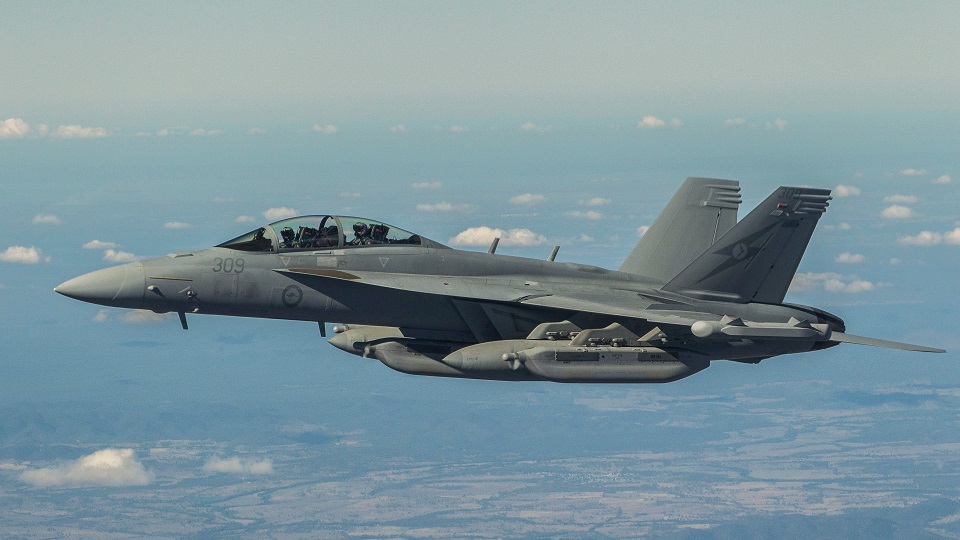
“They’ve already completed maintenance and air crew training, and they’re getting ready to accept the ship set,” he said. “The program now, one part of it is production and fielding, along with, we’ve got a continual improvement development program.”
Rueter wants to get the NGJ to a point where the Navy can send out four software updates a year, to keep the system more reliable, add new capabilities and mitigate software anomalies that pop up.
“I tell the team here, look at ALQ-99, it’s been flying for 50-plus years,” he said. “You need to have the mindset that ALQ-249 is going to fly for 50 years, and you’re going to continually upgrade it so we can continue to pace and stay ahead of the threat.”
Meanwhile, Rueter said his team is looking hard at getting electronic warfare to a place where systems leverage ‘cognitive electronic warfare‘ and can be updated in real time, or close to it.
“I can’t talk about specific systems or anything, but I’ll say, as an electronic warfare practitioner for going on 27 years now, I think that is definitely one of the areas we need to move in,” he said. “Artificial intelligence and machine learning brings a lot of capabilities that we haven’t really had access to before, and one of our charges here in the program office is to figure out what do they bring that we didn’t have before, and how can we use that to give the fleet better tools.”
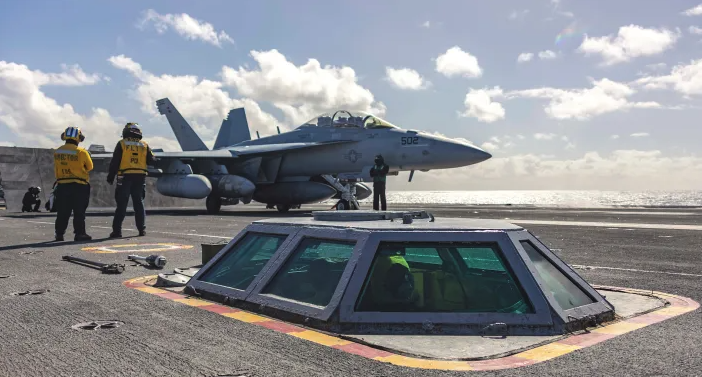
Since the Air Force retired the EF-111A in 1998, the Navy has been the only disclosed operator of dedicated fast-jet tactical electronic warfare capability within the U.S. military, and is therefore tasked with providing such support across the branches. Rueter said he welcomes any collaboration with other platforms or services that helps him put the “fog” into the fog of war when it comes to airborne electronic attack (AEA).
“While a majority of the systems we work on fly on a Growler today, I want to be the center of excellence, if you will, for all offensive electronic attack,” he said. “Another platform, whether it’s an [unmanned aerial drone], whether it’s a different manned aircraft, whether it’s a surface vessel, I’d like to think if they want to project some sort of electronic attack effect, they could come to us. We’ve already got a long lineage of people developing jammer techniques. Other people might refer to them as electronic warfare skills. So we’ve got a lot of experience and are happy to build payloads for whoever wants to do AEA.”
The NGJ has now deployed, contributed to combat operations and returned home. Meanwhile, the importance of such capabilities will only continue to grow in a warscape that places an increasing imperative on dominating the electronic spectrum.
Email the author: geoff@twz.com
